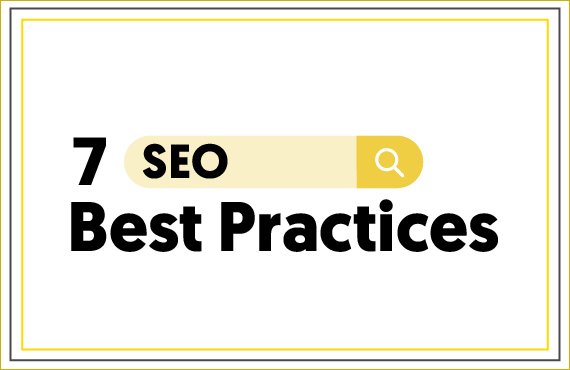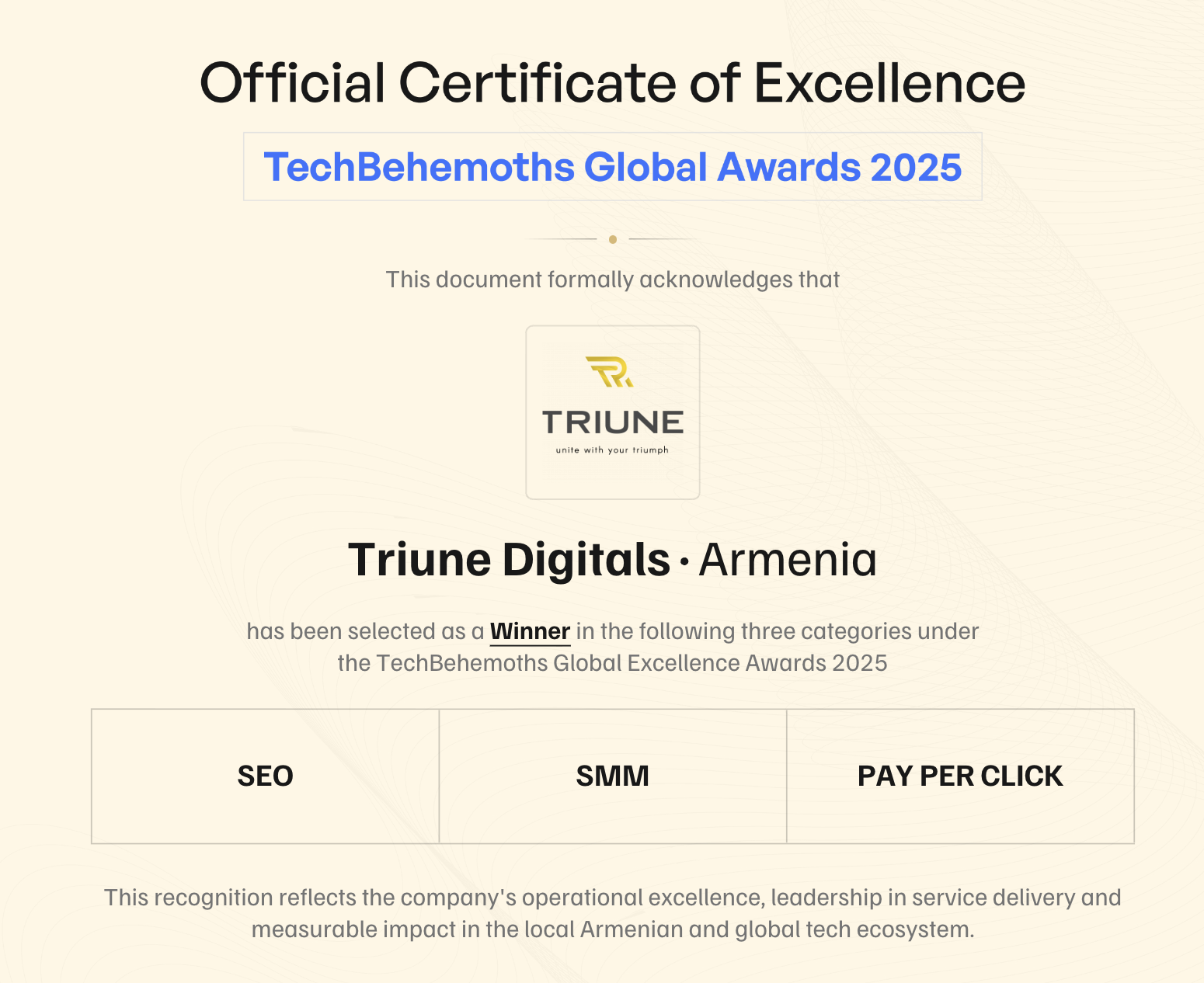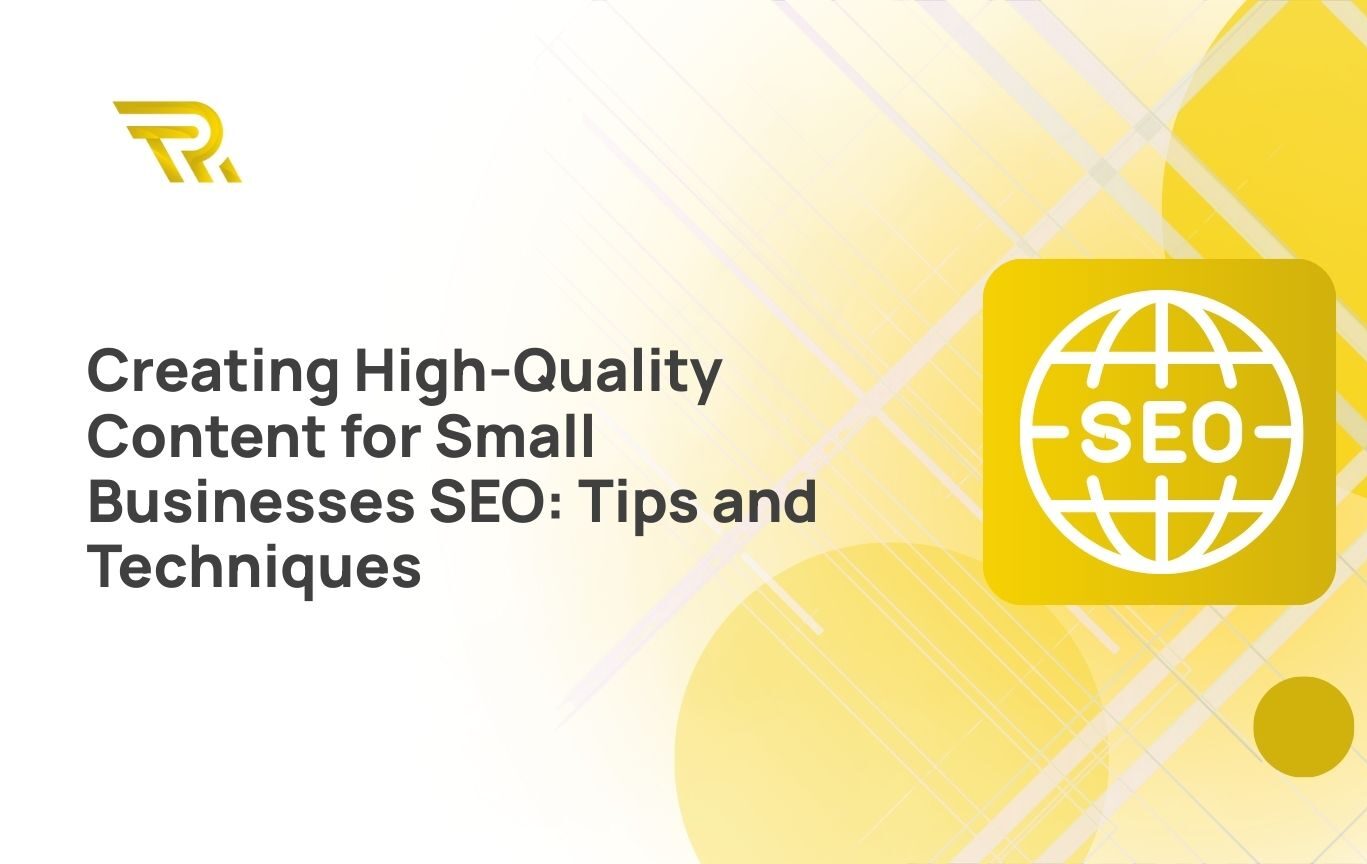SEO is an ever-changing landscape, To remain at the top of the ranks, you need to stay abreast of all new trends. In this blog, we will explore 7 SEO best practices, trends, and tips to follow in 2023.
SEO is a fundamental part of marketing that helps in boosting a site’s online visibility. The harsh truth is that if you’re not ranking on Google’s top ten results for your target keywords, your website is as good as being invisible to the search engines.
But why’s that the case?
According to HubSpot, 75% of searchers seldom go beyond the first page of search results to find what they’re looking for. This is why it is essential to appear on the first page to add more traffic and clicks to your website.
Here are our key takeaways:
Prioritize mobile optimization as mobile device usage continues to rise. Ensure your website is responsive, loads quickly, and delivers a seamless user experience across different screen sizes.
Focus on enhancing user experience (UX) by improving navigation, site structure, loading speeds, and creating engaging, user-centric content.
Invest in high-quality and relevant content creation. Incorporate natural keyword integration and provide comprehensive information to help search engines understand the relevance of your content.
Getting Started with SEO

The most straightforward way to rank higher on Google and other Search Engine Results Pages (SERPs) is through SEO services.
However, while we have been learning and practicing SEO for years now, we still can’t get the hang of it completely. This is basically because of the algorithmic changes that Google introduces regularly. It is reported that Google changes its ranking algorithms between 500 and 600 times a year!
Those are pretty many changes that you should be keen to track. Fortunately, you don’t have to keep an eye out for all updates, as you can only monitor the significant changes and work on them accordingly. Once you get the basics right, your chances of ranking on the first results page significantly rise.
These algorithm changes form the baseline for SEO best practices to follow. It’s not always easy to keep up ‒ or know which trends are worth spending time on. To help you navigate SEO in 2023, we’ve compiled a comprehensive guide with seven best practices to follow for SEO success.
In this post, we’ll cover the following key factors:
- Focusing on your website’s core vitals
- Setting up the right SEO content strategy
- Conducting keyword research
- Building more authoritative backlinks
- Learn the E-E-A-T principle
- Learn about SERPs and featured snippets
- Don’t forget technical SEO
So, let’s jump right in:
Understand your site’s core web vitals
Core web vitals might be a reasonably new SEO term you probably haven’t heard of. However, in 2023, it is essential to familiarize yourself with what exactly this entails. In May 2023, Google rolled out a Page Experience algorithm to rank pages based on its core web vitals. Understanding the significance of user experience in SEO has become increasingly crucial, especially with Google’s Page Experience algorithm emphasizing core web vitals to rank pages based on their overall user experience.
In layman’s terms, core web vitals are a set of factors considered by Google to be the most important in a page’s overall user experience. They are made up of three specific metrics that are inclined to size your page’s overall UX.
Google defines these vitals as a set of metrics that measure page speed, visual stability, and responsiveness. There’s a lot to consider on core web vitals as part of your overall SEO strategy. But, here’s a quick recap of the three key metrics:
- Largest Contentful Paint (LCP) – LCP measures page speed. This is the amount of time it takes for a page to load its primary content. The ideal LCP is 2.5 seconds, or even faster.
- First Input Delay (FID) – This is the measure of a page’s responsiveness. That’s how long it takes for a page to become responsive and interactive. The ideal FID should be less than 100 ms.
- Cumulative Layout Shift (CLS) – Measures visual stability. Your page must have top-notch visual strength, as this metric tracks the number of unexpected layout shifts of visual page content. The ideal CLS should be less than .1.
Ignoring core web vitals in 2023 is a surefire way to drop in rankings. Ensure to understand them all to be on the safe side.
Now that you understand what you’re supposed to be looking for, it would be prudent to know how to track and monitor your vitals. Ever since the May updates, Google has updated most of its existing website-tracking tools to include web vitals measurement capabilities.
Some of the tools include:
- Google Search Console
- PageSpeed Insights
- Lighthouse
- Chrome DevTools
- Chrome UX Report
- Web Vitals Extension
All these tools provide reports that offer deep insights into the health of your core web vitals metrics. Get ahead of the pack by familiarizing yourself with these tools that’ll help in getting your SEO score much higher.
Setting up the right SEO content strategy

Without the right content on your website, it will be quite challenging to achieve your SEO goals. Once you’ve ensured that your core web vitals are in check, the next thing would be to work on your web content. This includes everything, from blog posts, service/ landing pages, home page copy, etc.
Setting up the right SEO content strategy isn’t difficult, and neither is it a walk in the park. Here are a few pointers to consider when setting up your content strategy:
Align your content with search intent
Although this isn’t a relatively new trend, Google has focused on search intent (also sometimes referred to as ‘user intent’) to rank websites. Search intent is the purpose behind every search query on search engines.
Pages that rank higher on the SERPs have passed Google’s tests on search intent.
An SEO best practice is always to ask yourself how you intend to be helpful to the user. Are you providing informational content, or will it be commercial? Try to get into the shoes of your reader (or target audience) and imagine what they’d be thinking. That’s what you jot down on your website. Do not simply add content to your site for the sake of having it there.
Publish high-quality content
Once you’ve figured out your user intent, ensure that the content you publish is of high quality and value to the readers. There are several ways to go about this:
- Ensure that your content is free of any plagiarism
- Publish high-quality content that doesn’t have grammar errors and with a good flow
- Add relevant images, keywords, and links that will only add value to your readers.
- Publish long-form content
Long gone are the days when you’d find a 300-word article ranking high on the SERPs (not unless it is from a very high authority site). In 2023, long-form content ranks much higher, a claim backed by several studies.
You can even do the test yourself, pick a topic, and say “Best SEO best practices of 2023”. Once you type in the query on Google, the top results you’ll find are long-form content. According to statistics, posts with 3,000+ words get three times more traffic, four times more shares, and more than thrice the number of backlinks that articles with an average length of 900 words get.
Write a compelling title tag and meta description.
The title of your page and your meta description are two prominent meta tags to consider as you curate your content for SEO. Let’s have a quick dive in on them:
- Title tags
For starters, title tags are the clickable headlines that appear on the SERPs. To understand more about what they are, here’s a brief statement from Google:
“Titles are critical to giving users a quick insight into the content of a result and why it’s relevant to their query. It’s often the primary piece of information used to decide which result to click on, so it’s important to use high-quality titles on your web pages.”
Here are some tips to consider when formatting your content’s title tag:
- Keep the title descriptive but concise. Google only displays the full title as long as you keep it under 60 characters.
- Include your target keywords. This also boosts the search intent, and your content has a higher chance of being displayed on the top SERPs. However, be careful to avoid keyword stuffing.
- Avoid duplicate title tags on your website.
- Meta descriptions
A meta description summarizes what the page entails, and it appears right below the meta title. Although meta descriptions don’t necessarily affect page rankings, they are crucial as they influence click-through rates.
Here’s a snippet of what Google says about meta descriptions:
“A meta description tag should generally inform and interest users with a short, relevant summary of what a particular page is about. They are like a pitch that convinces the user that the page is exactly what they’re looking for.”
Some of the critical things to consider when optimizing your meta descriptions are:
- Provide an accurate but concise summary. Google truncates meta descriptions to only 160 characters, ensuring that your description ranges between 150 and 160 characters.
- Write unique meta descriptions for each page
- Match the search intent
- Use an action-oriented copy with a clear call-to-action (CTA).
Conducting keyword research

The motivation behind curating content on your website should always have a human-first approach. All your writings should be easily understandable by humans, with a good flow that makes sense and provides value to the readers.
However, you shouldn’t also forget that search engines come second mantra. Search engines must identify and rank your content but majorly based on the keywords you use. This means that as you concentrate on delivering quality content, ensure that you also include the right keywords in the right places.
For starters, ensure to include your primary keywords in the title and the content body. Other parts you can consist of keywords are the meta description, subtitles, and image alt. Texts. Besides that, if possible, ensure that your keywords appear on the page URL. By doing this, you stand to reap the benefits of keyword optimization, which shows its fruits through SEO rankings.
Getting started with keyword optimization isn’t difficult either. All you need is to gain access to some of the best keyword research tools like Ahrefs, Semrush, Uber Suggest, Google ads, etc.
Remember not to stuff your keywords in one piece as it may disrupt the readability of your content; hence, risking your ranking.
Building more authoritative backlinks
Despite the many changes that keep altering Google’s ranking algorithm, one thing has remained on the list for a long, and that’s link building. Google maintains that it still considers backlinks as a key ranking factor. They are said to act like votes of confidence to the receiving website.
In simpler terms, the more backlinks that are pointing to your website, the higher your chances of ranking as an authority in your niche.
That said, it would be prudent to understand that not all backlinks are the same. While there is clear evidence that they help your website rank higher, some backlinks can derail or even negatively affect your rankings.
Strive to only get links from authority websites and those specified in your niche (or industry). If you can get backlinks from educational or governmental domains, the better for you. One of the best ways to get started with white-hat link building is by replicating your crucial competitor’s backlinks. You can achieve this by using tools such as Ahrefs and Semrush.
Learn about the E-E-A-T principle
Another thing to add to your 2023 SEO best practices checklist is the E-E-A-T principle. This is one of the critical factors that will help you to achieve your long-term SEO goals.
But what exactly is the E-E-A-T principle?
E-E-A-T stands for Experience, Expertise, Authoritativeness, and Trustworthiness. This is essentially the measure of a brand’s reputation online. According to Google’s ranking algorithms, sites that are more established and have shown their authority and displayed trustworthiness are more likely to rank higher than those that don’t.
Another way to look at it is to subdivide and identify what each of the critical considerations under E-E-A-T implies:
- Experience: Demonstrating first-hand experience with the subject matter is a common characteristic of quality content. This provides evidence that the recommendations or suggestions have been personally tested and validated by the creator.
- Expertise: This means that you have shown that you fully understand your niche or industry. The type of content published on your website is quite helpful to the readers who find value in what you post.
- Authority: You have established yourself as an authority or source of information for that particular niche. For instance, one of the critical methods of building your authority is to get backlinks from authority websites.
- Trustworthiness: This entails how reputable your website is and how people trust you. There are many ways to boost your website’s reliability, including getting good reviews from reputable sites like Yelp and getting mentions on online forums.
You can also demonstrate your E-E-A-T on your website by having testimonials, reviews, case studies, and other forms of social proof.
Learn about SERPs and featured snippets
Featured snippets should and must be at the top of your mind as your curate content for your site. This is one of the top trending SEO best practices in 2023 that you can’t afford to ignore.
Also referred to as the holy grail of search, featured snippets appear in position zero on the SERPs.
While many websites are currently fighting for the top ten positions on the SERPs, other, more established sites are targeting to appear at the top-most part (or position zero). These are snippets of the answer to a specific query that Google displays from a third-party website.
Although you don’t choose what part of your content gets displayed as a rich snippet, there are several ways that you optimize your content to increase the chances of being featured. Some of them include:
- Organize your content in a structured way
- Opt to answer specific questions on your page using tables
- Go for question titles and subtitles, and ensure to provide a direct answer within the content.
It would be prudent to note that most sites that appear within the featured snippets also rank on the top ten list for that particular keyword. This means that as you focus on appearing on the featured snippets, you should not forget to focus on ranking on the top SERPs first.
Don’t forget technical SEO

Do you at some point feel like no matter how many optimized blog posts you publish or backlinks you achieve, you’re still not getting through the ranks of Google? Well, it may be time to start focusing on what exactly is holding your SEO back. This means it is high time for you to get behind the scenes and conduct an SEO audit of your website to check if everything is in order.
It is a brainer that technical site performance can impact the overall SEO score.
If you’ve been struggling to improve your Google rankings despite your efforts, it might be time to delve into the technical aspects of SEO by using a comprehensive technical SEO guide to conduct a website audit and identify potential issues. Although you can get a professional to help you out, you can always get the assistance you require through SEO tools, such as Ahrefs and Semrush. Some of the main factors to check during the audit are:
- Look for slow pages
- Any broken links or redirects
- 404 errors
- Duplicate HTML tags and content
- Redirect chains
- Broken images, and many more.
The other thing to consider is whether your site is well-optimized for mobile. In 2023, it is pretty clear that most people access the internet through their mobile phones.
You wouldn’t want to miss out on such massive traffic just because your website isn’t mobile-ready. As you audit your website, ensure to run it through a mobile-friendliness test.
To boost your location-based online business, make sure to follow a detailed local SEO guide to optimize your website effectively.
Secure website(HTTPS) and user trust
Having a secure website with HTTPS is crucial in building user trust and ensuring the safety of their data. HTTPS encrypts the communication between users’ browsers and the website, providing a secure connection. It is not only a ranking signal for search engines but also gives visitors confidence in the authenticity and reliability of your site.
- HTTPS establishes encrypted communication and protects user data
- SSL certificates verify website authenticity
- HTTPS is a ranking signal and boosts search visibility
- Users trust websites with the secure padlock symbol
- Regularly renew SSL certificates for ongoing security.

Beat out the competition with the best SEO strategy in 2023
As we have mentioned in this post, Google releases 500 and 600 new ranking algorithms every year. It would be correct to say that it would be pretty impossible to monitor all these changes as a website owner.
However, keeping in mind these 7 SEO best practices, trends and tips will enable you to boost your online visibility.
Do you want to stay ahead of your online competition? Why not let the SEO experts take care of your website for you? Let us do the heavy lifting for you, getting better site rankings, as you focus on the most crucial part of your business, running it.





